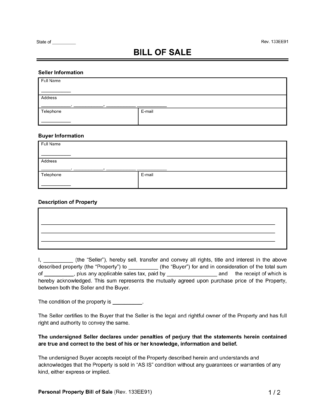
Use our bill of sale forms to record the sale of any item and protect both buyer and seller.

Updated September 10, 2024
Written by Sara Hostelley | Reviewed by Brooke Davis
A bill of sale is a document that details a sales transaction or transfer of ownership between two parties. Like a receipt, it records the sale or transfer of valuable assets like cars and protects the buyer and seller from future legal disputes over the item’s condition or ownership.
Either party (the buyer or seller) can write a bill of sale, but the seller typically prepares it. Once signed, both parties should keep copies to prove the transaction’s completion.
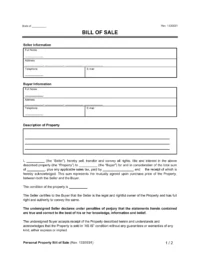
Transfers ownership of personal property from the seller to the buyer.

Allows you to sell or transfer ownership of a motor vehicle, including automobiles, trucks, vans, and motorcycles.
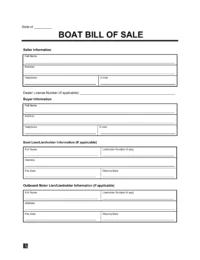
Facilitates the transfer of ownership of a boat or other water vessel.
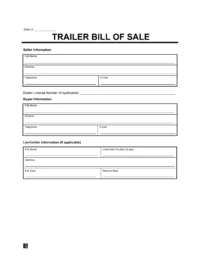
Serves as a tool for transferring ownership of a pull-behind vehicle.
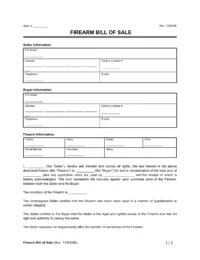
Enables the formal transfer of ownership of a firearm.
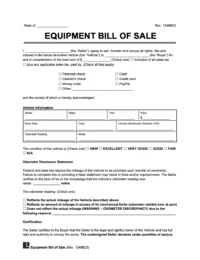
Documents the transfer of equipment ownership.
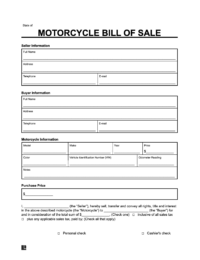
Officially records the sale and transfers ownership of a motorcycle.
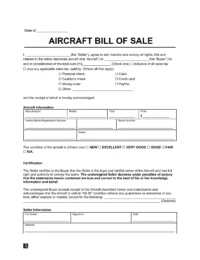
Helps in transferring ownership of an aircraft.
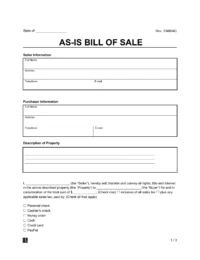
Conveys property ownership as-is without any warranties.
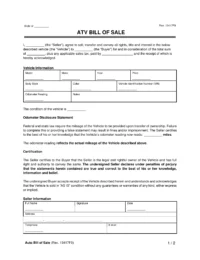
Acts as proof of ownership transfer of an all-terrain vehicle (ATV).
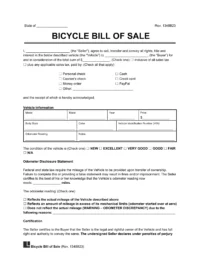
Establishes the sale and transfer of a bicycle.
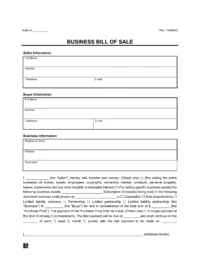
Pass ownership of a business from one party to another.
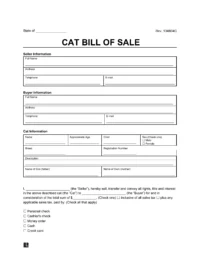
Serves as a written agreement for the transfer of ownership of a cat.
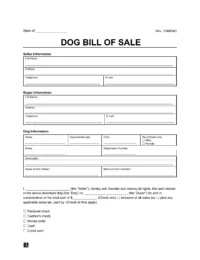
Facilitates the legal handover of a dog.
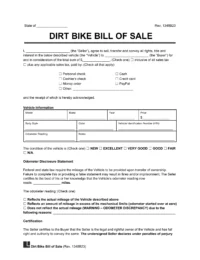
Ensures the rightful transfer of ownership of a dirt bike.
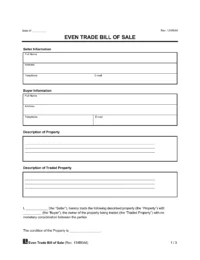
Facilitates a barter by recording the transfer of ownership of items.
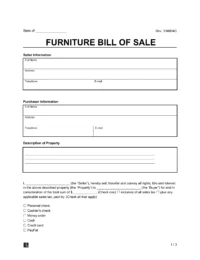
Acts as a record of ownership exchange for a piece of furniture.

Confirms the shift in ownership for a car that one party gifts to another.
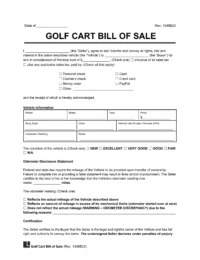
Secures the formal change of ownership of a golf cart.

Gives a written account of the transfer of ownership of a horse.
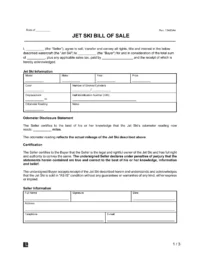
Provides documentation for transferring ownership of a jet ski.
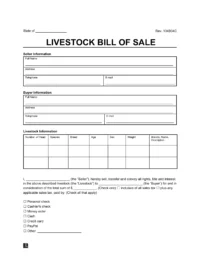
cts as a legal document proving the shift in ownership of livestock.
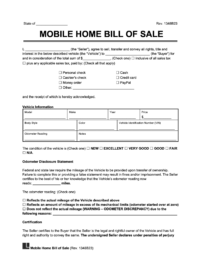
Transfers ownership rights of a mobile home.
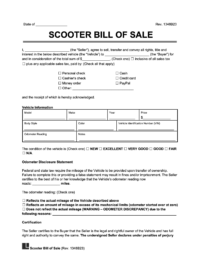
Serves as a binding document for the sale and transfer of a scooter.
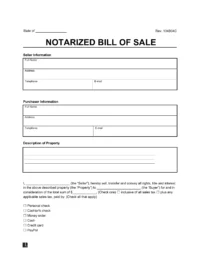
Specifies and records the transfer of personal property. Contains acknowledgment from a notary public for added authenticity.

Enables the shift of ownership of a recreational vehicle (RV).
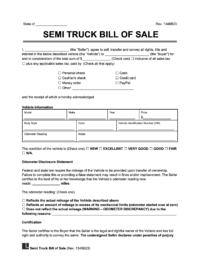
Marks the official handover of a semi-truck.

Legalizes the transfer of a tractor.
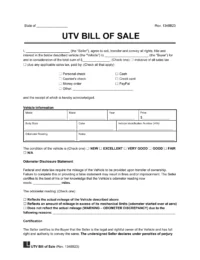
Provides legal confirmation of ownership transfer of a utility terrain vehicle (UTV).
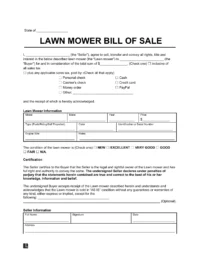
Ensures a proper transfer of ownership rights of a lawn mower.
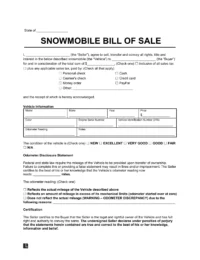
Certifies the change in ownership of a snowmobile.

Prepare the vehicle for sale by completing the following tasks:
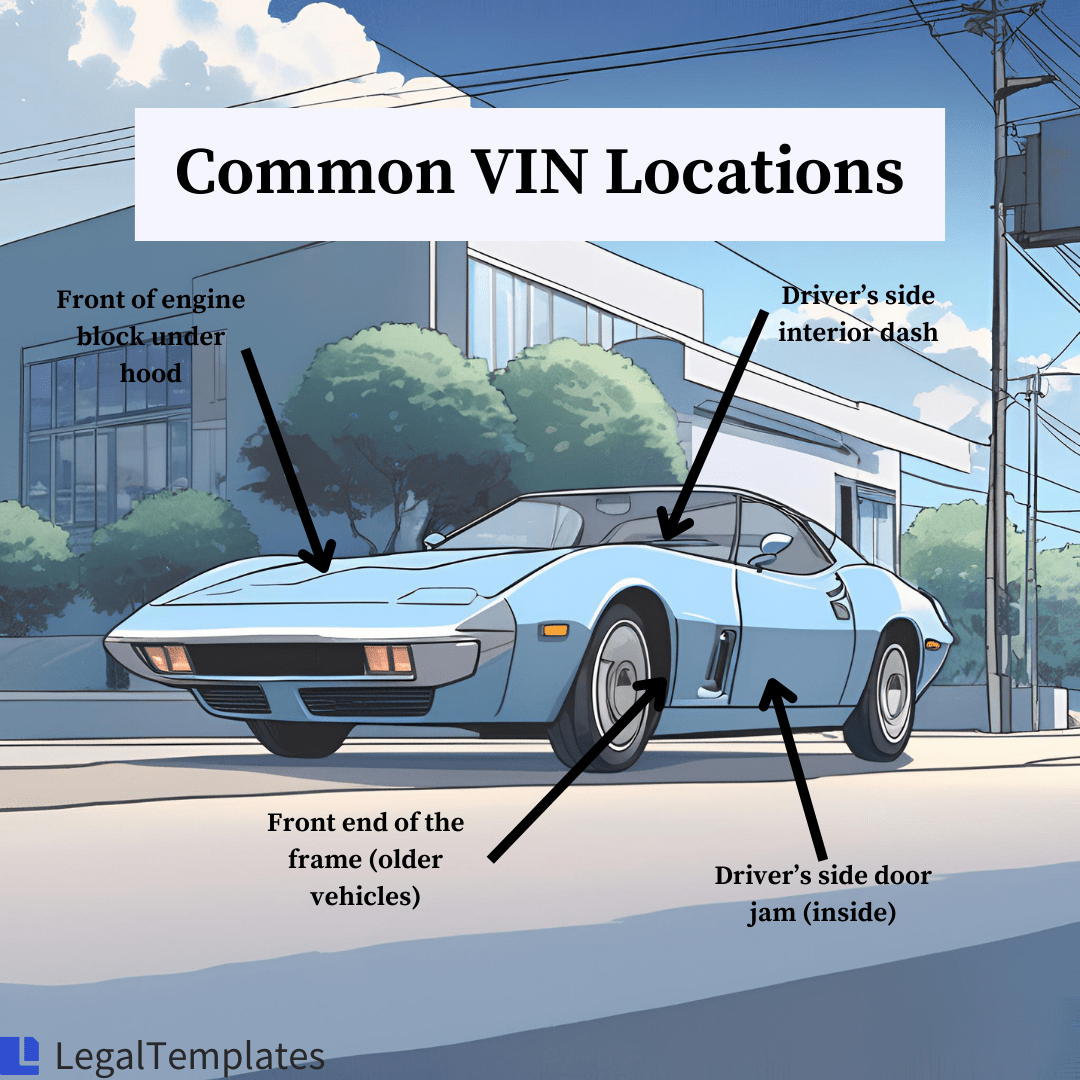
Find your vehicle’s 17-digit VIN (vehicle identification number) to determine its ownership and accident history. It may be on the automobile’s title or registration or on the vehicle itself.
Once you find the VIN, enter it into services like the National Motor Vehicle Title Information System (NMVTIS), AutoCheck, or CARFAX. The VIN will produce detailed records for your specific vehicle based on data reported from law enforcement personnel, repair shops, and insurance companies.
Looking up the ownership and accident history can help you create transparency with buyers, prepare for buyer questions, and issue the necessary disclosures.

Research the standard selling prices for vehicles similar to yours. Use tools like Kelley Blue Book and Edmunds to determine a fair selling price. Input your vehicle’s make, model, year, and condition. Be honest about the condition so
While it’s not necessary, you may have a third party inspect the vehicle. If the inspector can produce a clean report, you may increase buyers’ confidence.
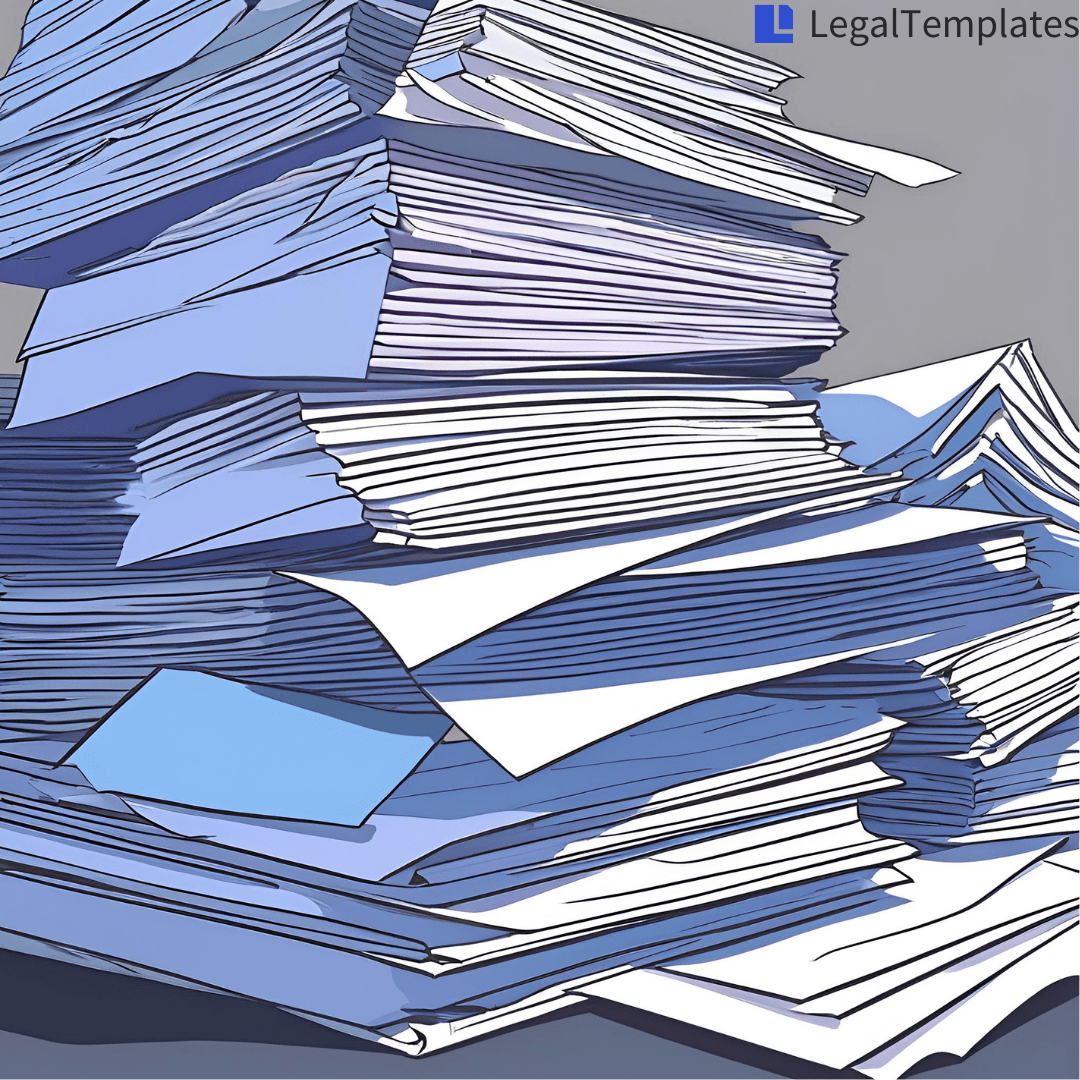
The seller must provide various documents to complete a vehicle sale and transfer ownership to the buyer. These documents include the following:

Once you complete the aforementioned steps, you can look for a buyer. Take high-quality pictures of your vehicle to showcase all it has to offer. Write a detailed description, including the year, make, model, condition, mileage, asking price, and unique selling points.
Screen potential buyers and determine their interest and commitment. Assess their response time and obtain the answers to questions like “Have you secured financing?” and “Are you looking to buy it soon?”

Once you find an eager buyer, you can arrange an in-person meeting to negotiate the purchase price and payment terms. Before negotiations begin, it’s wise to decide on the lowest amount you’re willing to accept. This way, you have a baseline for your negotiations.
During negotiations, it’s important to be transparent about the vehicle’s condition and disclose any known defects or issues.
Once you agree on a mutually acceptable price, confirm it in writing to avoid misunderstandings later.
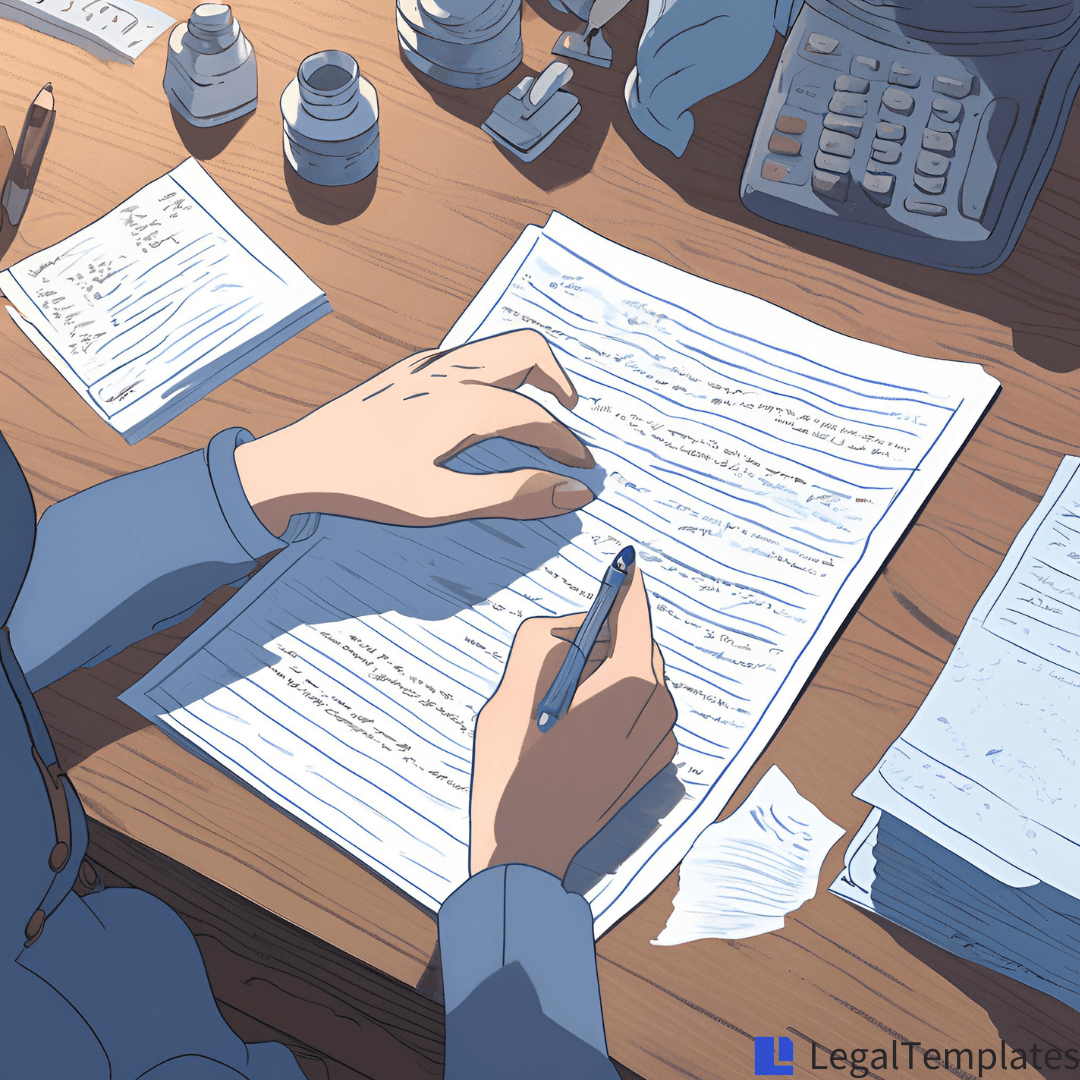
The parties can now complete the sale at an in-person meeting. The buyer will bring the funds, and the seller will bring the vehicle. The seller will sign the title to the buyer, and both parties will sign the bill of sale.
A bill of sale must include details about the parties, vehicle, and transaction. If a warranty is included, the coverage should be clearly defined. If not, the vehicle is sold “as-is.” If your state requires notarization for vehicle bills of sale, you must have a notary observe both parties’ signatures.
Accept a secure form of payment. Cash or a cashier’s check is often the safest method, but ensure you issue a receipt to confirm that you received the full amount. Don’t release the vehicle until you’ve received full payment and all the funds have cleared.
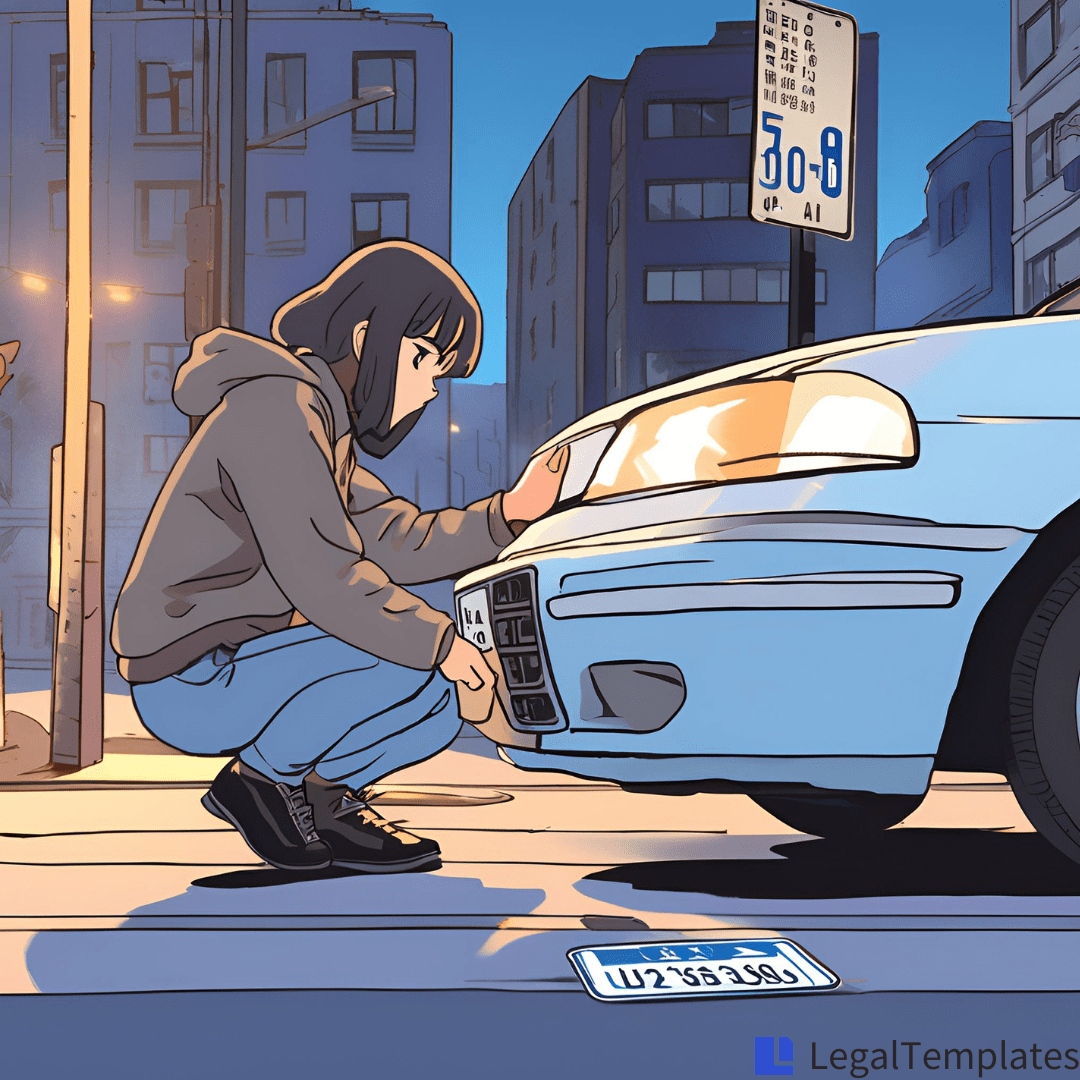
Check your local DMV’s requirements to learn if you need to remove your license plates before giving the vehicle to the new owner. You can also call your insurance company to cancel coverage.

Complete any applicable post-sale requirements. Depending on your state, you may need to alert the DMV when you sell a vehicle. You may also have to pay sales tax on the vehicle and submit it to your state’s DMV office.
Depending on your state, you may or may not need a bill of sale to transfer vehicle ownership. While a bill of sale is a valuable record of the buyer-seller transaction, it does not serve as proof of ownership on its own—this is the role of a vehicle title.
Learn if your state requires a bill of sale to confirm ownership certification below:
| State | Location | Bill of Sale Required? |
|---|---|---|
| Alabama | Vehicle Licensing Offices | Yes |
| Alaska | Division of Motor Vehicles | No |
| Arizona | Motor Vehicle Division | No |
| Arkansas | Department of Revenue Office | Yes |
| California | Department of Motor Vehicles | No |
| Colorado | Division of Motor Vehicles | No |
| Connecticut | Dept. of Motor Vehicles | Yes |
| Delaware | Dept. of Motor Vehicles | No |
| Florida | Motor Vehicle Service Centers | No |
| Georgia | County Tag Office | Yes |
| Hawaii | Department of Transportation, Highways Division | Yes |
| Idaho | Idaho Transportation Department | No |
| Illinois | Facility Locations | Yes |
| Indiana | Indiana Branch Locations | No |
| Iowa | Iowa Motor Vehicle Division | Yes |
| Kansas | Kansas Department of Revenue | Yes |
| Kentucky | Drive.KY.Gov | No |
| Louisiana | Office of Motor Vehicles | No |
| Maine | Bureau of Motor Vehicles | Yes |
| Maryland | Motor Vehicle Administration | Yes |
| Massachusetts | Registry of Motor Vehicles | Yes |
| Michigan | DMV Office Finder | Yes |
| Minnesota | Driver and Vehicle Services | No |
| Mississippi | Tax Collector’s Office | Yes |
| Missouri | License Office Locations | Yes |
| Montana | Motor Vehicle Division | Yes |
| Nebraska | Department of Motor Vehicles | Yes |
| Nevada | Department of Motor Vehicles | Yes |
| New Hampshire | Division of Motor Vehicles | Yes |
| New Jersey | Motor Vehicle Commission | No |
| New Mexico | Motor Vehicle Division | Yes |
| New York | Department of Motor Vehicles | Yes |
| North Carolina | Department of Motor Vehicles | No |
| North Dakota | Motor Vehicle Site Locations | No |
| Ohio | Bureau of Motor Vehicles | Yes |
| Oklahoma | Department of Public Safety | Yes |
| Oregon | Department of Motor Vehicles | No |
| Pennsylvania | Department of Motor Vehicles | No |
| Rhode Island | Department of Motor Vehicles | Yes |
| South Carolina | Department of Motor Vehicles | No |
| South Dakota | Motor Vehicles Division | Yes |
| Tennessee | Driver Services | No |
| Texas | Department of Motor Vehicles | Yes |
| Utah | Department of Motor Vehicles | Yes |
| Vermont | Department of Motor Vehicles | Yes |
| Virginia | Department of Motor Vehicles | No |
| Washington | Department of Licensing | Yes |
| West Virginia | Department of Motor Vehicles | Yes |
| Wisconsin | Department of Motor Vehicles | No |
| Wyoming | County Treasurer’s Office | Yes |
| Show More Show Less | ||
Here’s how to write a bill of sale: